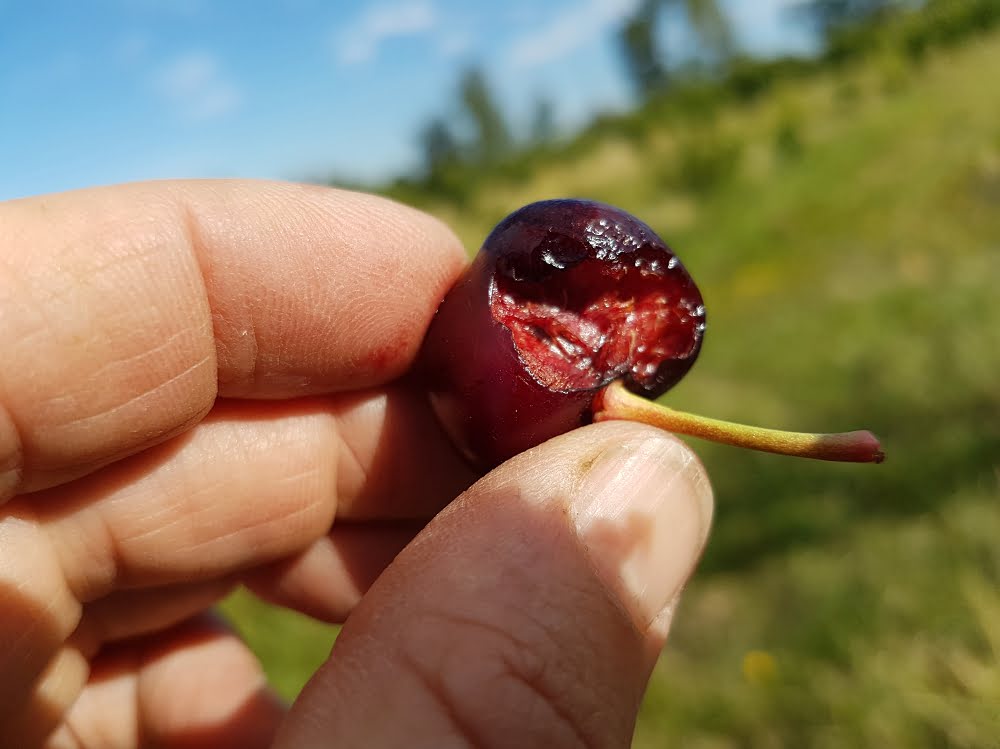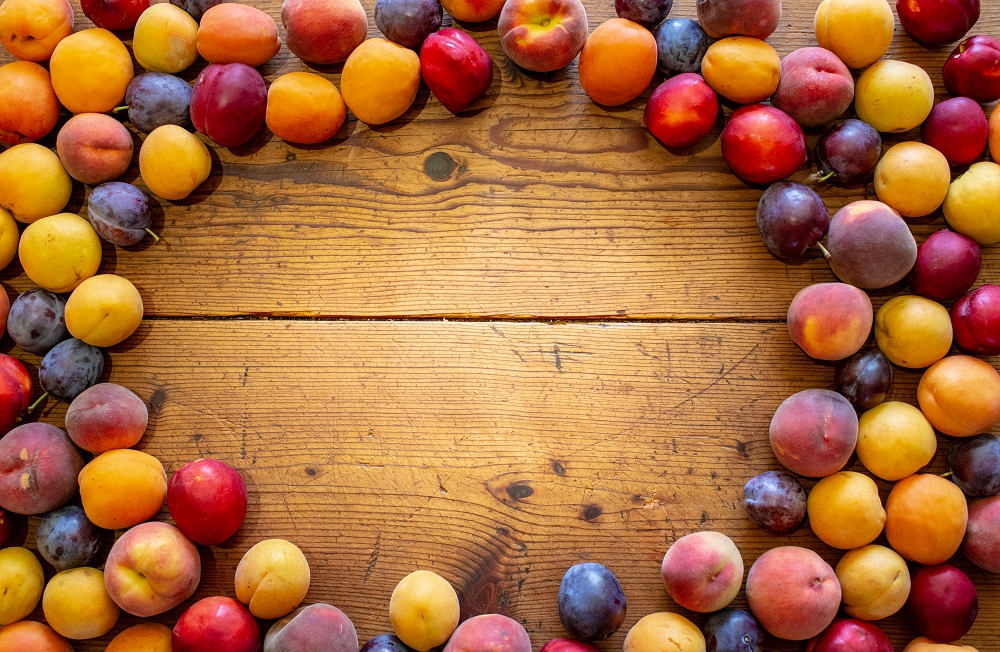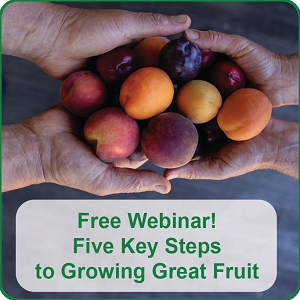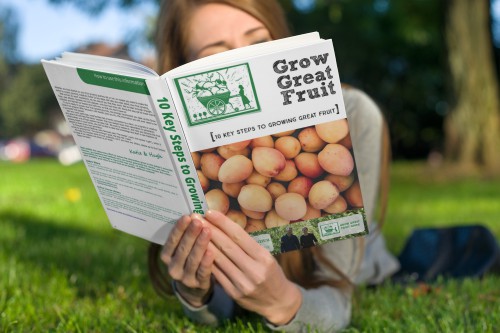Estimated reading time: 5 minutes
Cherry trees are often not the first choice for backyard fruit growers. They’re the bad boys of the fruit-growing world and are often considered to be “difficult” trees to grow.
It’s true that they can be quite a risky crop.
For example, rain at the wrong time will almost certainly result in some splitting in your crop. In a really wet year, rain can also lead to brown rot infections.
Birds love them, earwigs get into the trees and eat the fruit, and they provide a feast for aphids. Snails have even been known to slither up cherry trees to munch the delicious fruit.
We’re not making them sound very attractive, are we?
Despite the potential problems, growing cherries is well worth the effort. The good news is that most cherry problems are predictable. That means you can plan for them and may even be able to prevent them.
Let us talk you into growing a cherry tree …

Are cracked cherries really the pits?
Cracking after rain undeniably makes the cherries look terrible (as you can see in the photo above). For commercial growers, cracked cherries can’t be sold and are thrown away.
It’s a tragedy!
However, cracking doesn’t necessarily mean a complete disaster for the home grower. The cherries are often still perfectly usable for cooking or even for eating.
There’s a little bit of planning and a little bit of luck involved.
The best-case scenario is when (1) the cracks aren’t too bad, and (2) the rain is brief or intermittent so the cherries get a chance to heal before they rot.
Under those circumstances, the cherries will continue to hang on the tree – looking ugly – and you can harvest them at your leisure.
If they don’t dry out quickly and get a chance to heal, then you have a much smaller window to harvest and eat them quickly. If they’re left cracked and wet on the tree for very long, they have a high risk of developing brown rot.
The other solution to the cracking problem is to include more than one variety in your garden. This spreads the risk. Rain will normally only damage fruit that is ripe or almost ripe. If you have another variety that is still weeks away from picking when it rains, they may survive unscathed.
Cherries can give you the edge over fruit fly
Cherries are the perfect tree for any area where Queensland Fruit Fly has become established. It’s better to focus on growing crops that ripen early in the season. This gives the fruit flies less time to get into the crops.
You’ll probably still need to do all the normal fruit fly prevention techniques like trapping and netting but for much less time.
This gives you a higher chance of actually being able to pick fruit from your trees (and the fruit fly netting will also keep the birds away, which is a huge bonus!).

9 reasons to plant a cherry tree
All up, we reckon the pros definitely outweigh the cons. So, here are our top 9 reasons to include a cherry tree in your garden:
- They’re picked early in summer, giving Queensland Fruit Fly little time to get established and ruin your crop
- Cherries grow well in a range of climates. You just need winters that are cold enough and summers that are hot enough.
- Cherries get very few diseases. In very wet years we’ve had tiny amounts of brown rot, but even then, haven’t needed to spray any organic fungicides. In fact, there are no diseases that we routinely spray cherries for.
- Cherries mainly fall prey only to predictable pests. Fruit fly as mentioned, birds (of course), earwigs, and pear and cherry slugs are the main culprits.
- Different varieties are available which ripen from late November through to mid-January. It’s possible to have fresh cherries for at least 6 to 8 weeks if you choose the right varieties.
- The fruit is incredibly good for you. Cherries contain potassium, calcium, vitamin C, copper, and manganese. They are also a good source of fibre, antioxidants, and anti-inflammatory compounds.
- The fruit is easy to preserve in a number of different ways. It lends itself to bottling, freezing, and drying, and they’re great for cooking.
- They’re ripe and ready for Christmas—and they make great gifts
- They’re one of the most delicious fruits you can grow!

We grow and sell cherry trees from our on-farm nursery called Carr’s Organic Fruit Tree Nursery every year.
The trees we grow will suit gardeners in Victoria and southern NSW, as the trees have been grown in this district to suit local conditions.
If you’re reading this from somewhere else, we urge you to seek out a local nursery and get their advice about local varieties.
Don’t be daunted by cherry trees!
Go ahead and plant one. Learning how to prune and care for your cherry tree will go a long way to helping you grow cherries with confidence.
And as your cherry trees thrive, you can look forward to summer every year when your trees burst into life and reward you with an abundance of sweet, juicy flavor bombs.





I bought 2 cherry trees in the first winter after we moved to Trawalla in December 1985. We also purchased other trees and planted them on a patch of land between the end of the main dam and a corner of our 10 acre property. This was to allow the overflow to run into the high side of orchard and between the rows when the dam was full.
After a few years we realised we didn’t have enough dam water so moved the orchard. This was reasonably successful.
I planted the cherries a little away from the other trees as they appeared smaller and I had read not to prune them. Some years later I was told by a friend who picked cherries in South Australia for the harvest season and went back to help prune when required. So I tried pruning one. It struggled after that and died a couple years later.
We did get some cherries most years and didn’t lose too many to the birds as they started fruiting well before the rosellas and other problem birds arrived and the berries often the leaves protected the fruit too.